The Japanese have some fascinating and large bugs on their islands. Is it any wonder these wonderful animals would figure to a noticeable degree in their sci-fi and fantasy?
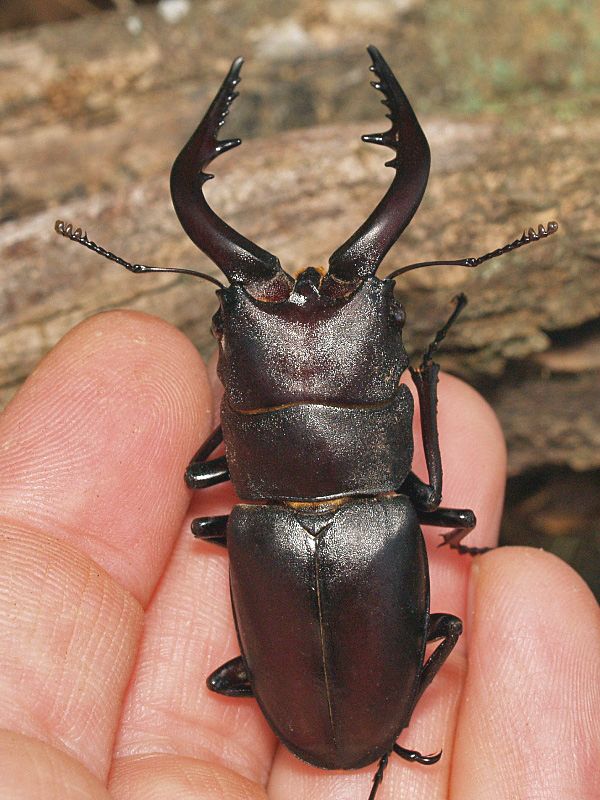 The Nokogirin (ノコギリン) kaiju hails from episode 26 of the Ultra series – “Return of the Ultraman” and is loosely based upon the Nokogiri Kuwagata (saw stag beetle, Prosopocoilus inclinatus) of Japan. Nokogiri means “wood cutting saw.” This particular beetle is so named for the large, down-turned, saw-like mandibles of the males.
The Nokogirin (ノコギリン) kaiju hails from episode 26 of the Ultra series – “Return of the Ultraman” and is loosely based upon the Nokogiri Kuwagata (saw stag beetle, Prosopocoilus inclinatus) of Japan. Nokogiri means “wood cutting saw.” This particular beetle is so named for the large, down-turned, saw-like mandibles of the males.
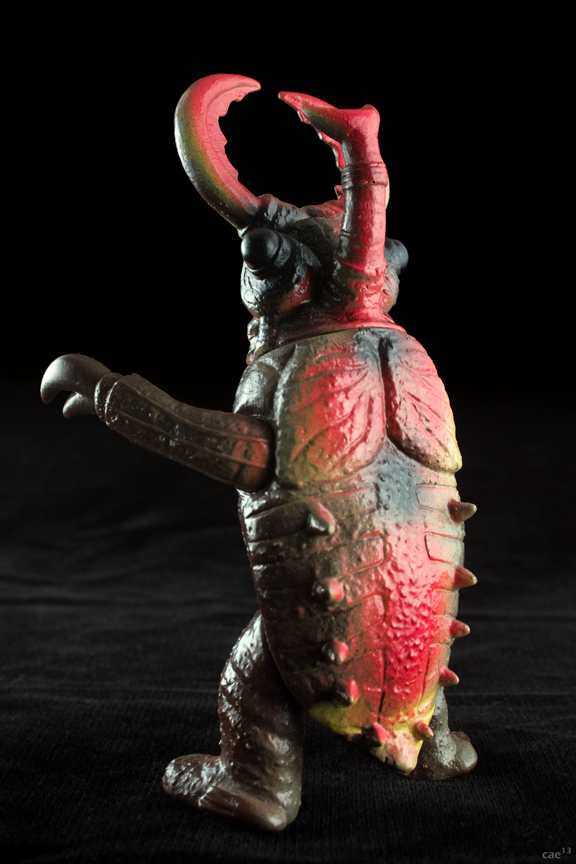 As a fan of the giant monster designs that populate the wild and wooly Ultraman universe, I’ve long been familiar with insect monsters like Satan Beetle and Antlar. I was unfamiliar with Nokogirin when I first spotted it in an online auction. Iassumed it was a looser sculpt of one of the aforementioned bug kaiju. Upon receipt of the toy I learned it was an entirely different monster: cool!
As a fan of the giant monster designs that populate the wild and wooly Ultraman universe, I’ve long been familiar with insect monsters like Satan Beetle and Antlar. I was unfamiliar with Nokogirin when I first spotted it in an online auction. Iassumed it was a looser sculpt of one of the aforementioned bug kaiju. Upon receipt of the toy I learned it was an entirely different monster: cool!
Nokogirin – Godzilla’s Gang Member?
One of the things that makes this toy “strange” is its interesting pedigree:
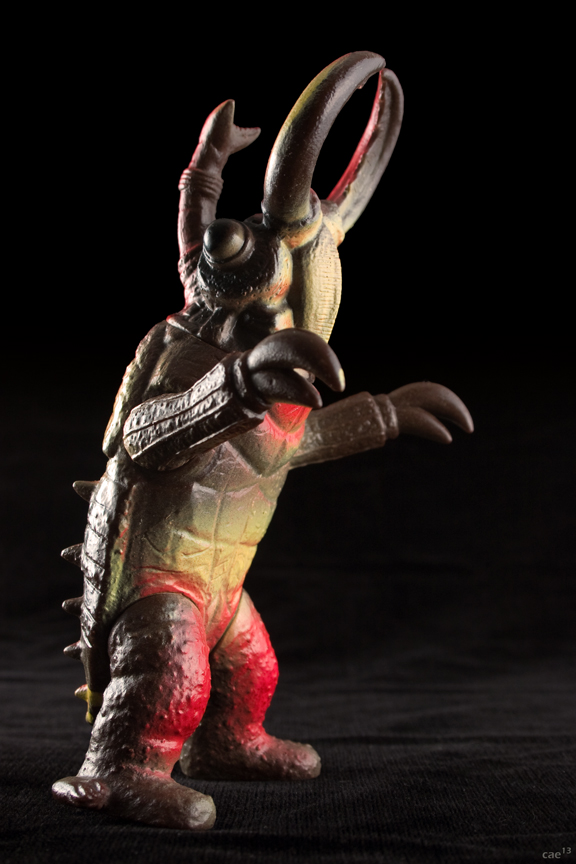 Manufactured in the 70’s for Mattel by Bandai, Nokogirin was sold in the US as part of “Godzilla’s Gang.” It, along with all the other toys in the set except Godzilla, are recasts of Popy Ultra Saurus toys. That’s right: Popy toys from Japan recast by Bandai in Taiwan for Mattel in America – whew! “Godzilla’s Gang,” in other words, is made up of characters that have nothing to do with Godzilla. Ah, what do American kids know, anyway?
Manufactured in the 70’s for Mattel by Bandai, Nokogirin was sold in the US as part of “Godzilla’s Gang.” It, along with all the other toys in the set except Godzilla, are recasts of Popy Ultra Saurus toys. That’s right: Popy toys from Japan recast by Bandai in Taiwan for Mattel in America – whew! “Godzilla’s Gang,” in other words, is made up of characters that have nothing to do with Godzilla. Ah, what do American kids know, anyway?
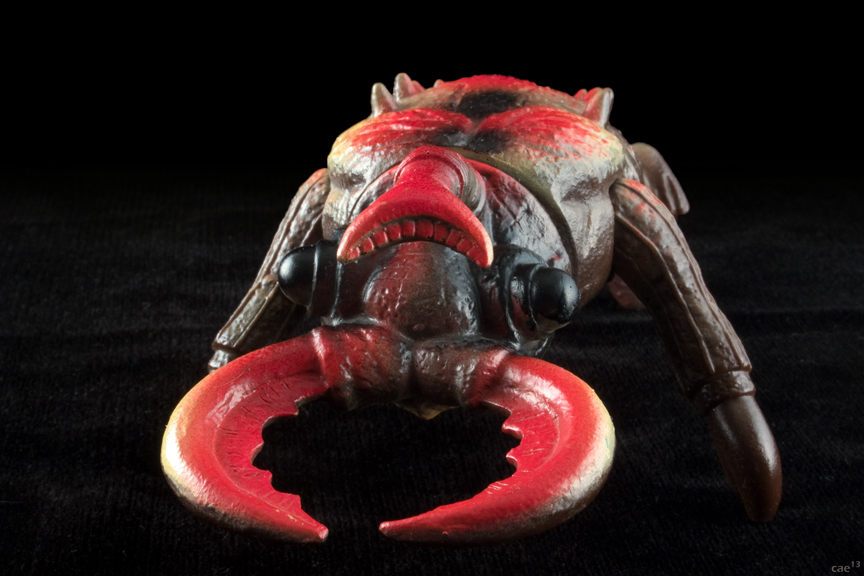 Like a bridge between two worlds, this toy is smaller, around 6″ in height, reflecting what has become standard scale among mass-produced, vinyl kaiju. At the same time, it has a less-faithful, looser sculpt and devil-may-care colors that hearken back to the older, larger kaiju that precede it.
Like a bridge between two worlds, this toy is smaller, around 6″ in height, reflecting what has become standard scale among mass-produced, vinyl kaiju. At the same time, it has a less-faithful, looser sculpt and devil-may-care colors that hearken back to the older, larger kaiju that precede it.
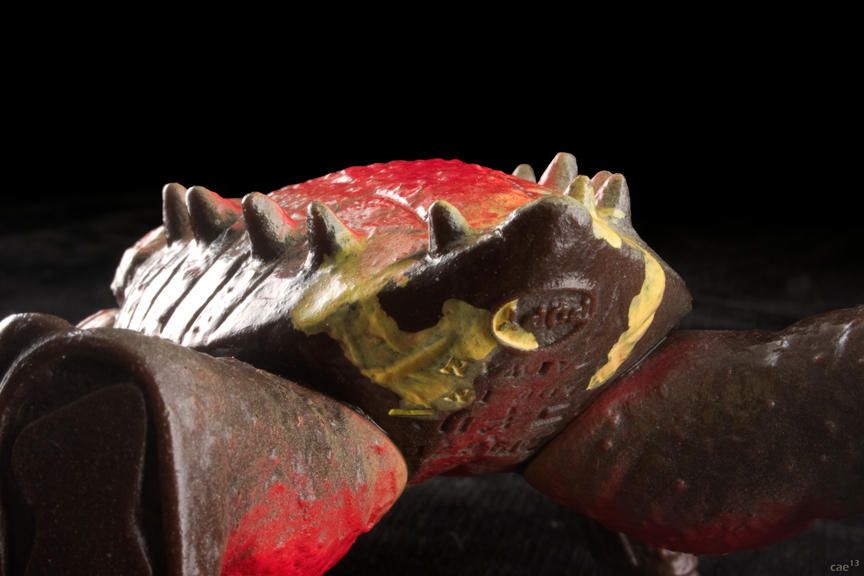 I was a bit surprised at the sloppiness of some of the paint. While the toy looks good at first glance, closer inspection reveal a dab of yellow on one claw, and paint runs up the belly from excessive yellow paint on the tail. Clearly, whomever was doing yellow that day was a bit of a Messy Marvin. Would this have passed QC in a Popy plant? Nice job, Tibor!
I was a bit surprised at the sloppiness of some of the paint. While the toy looks good at first glance, closer inspection reveal a dab of yellow on one claw, and paint runs up the belly from excessive yellow paint on the tail. Clearly, whomever was doing yellow that day was a bit of a Messy Marvin. Would this have passed QC in a Popy plant? Nice job, Tibor!
Which Way Is Up?
Another bit of strangeness is the confusion around the orientation of the toy’s head.
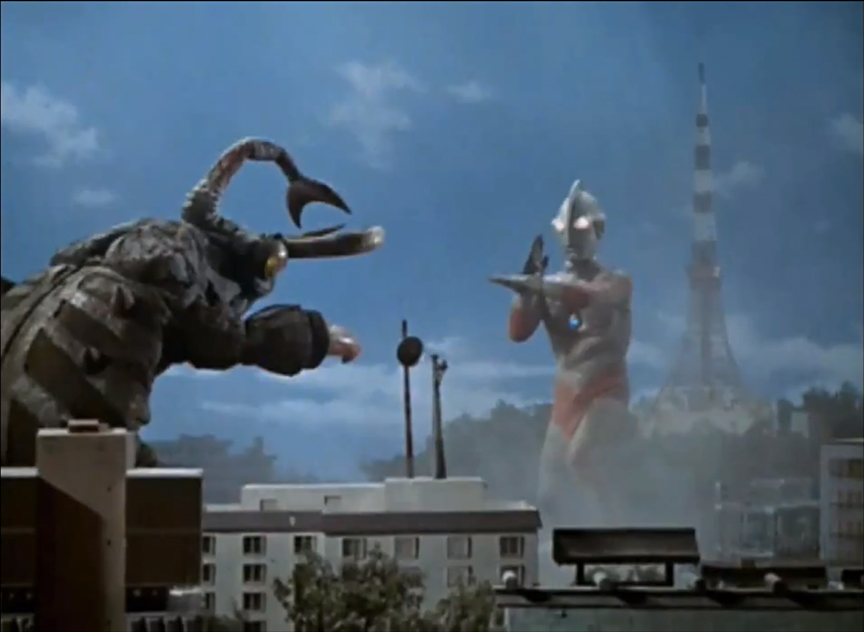
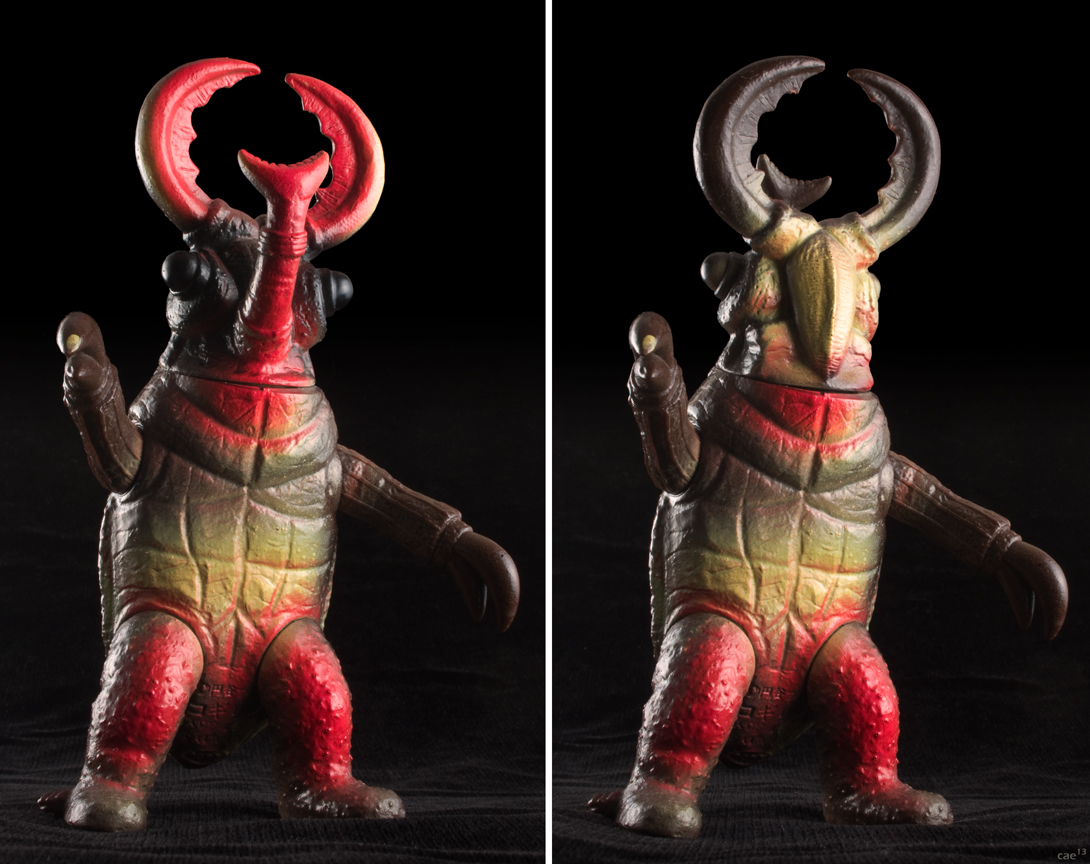 Nokogiri Kuwagatta’s mandible and horn (for lack of a more educated term) are oriented so that the horn, much smaller in relation to the body of the real insect than on the toy, is on the back side of the animal’s head, curving towards the earth. Nokogirin’s greatly enlarged horn can clearly be seen bobbling around in this configuration, in its “Return of the Ultraman” episode.
Nokogiri Kuwagatta’s mandible and horn (for lack of a more educated term) are oriented so that the horn, much smaller in relation to the body of the real insect than on the toy, is on the back side of the animal’s head, curving towards the earth. Nokogirin’s greatly enlarged horn can clearly be seen bobbling around in this configuration, in its “Return of the Ultraman” episode.
The toy, on the other hand, was assembled and marketed with the horn protruding from the front. Instead of threatening headgear, it pokes up from the creature’s face like a mutant proboscis.
Color me confused.
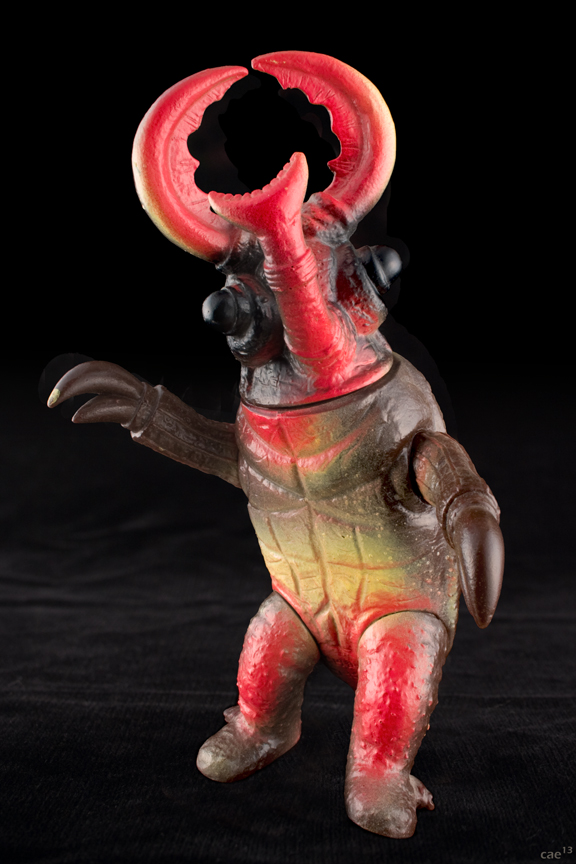
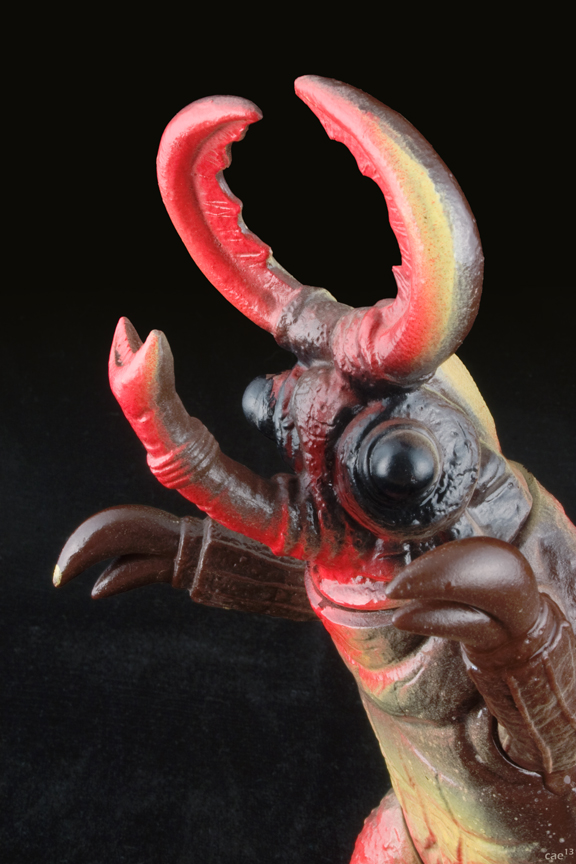 I understand the reasoning, actually. Standing erect, the toy is much more interesting and personable with the horn facing “forward” – less awkward and real-world bug-like. So natural, in fact, that it never even occurred to me that it might be facing the “wrong” direction. The first few shots I took of the toy reflect this.
I understand the reasoning, actually. Standing erect, the toy is much more interesting and personable with the horn facing “forward” – less awkward and real-world bug-like. So natural, in fact, that it never even occurred to me that it might be facing the “wrong” direction. The first few shots I took of the toy reflect this.
After some research, I came to the conclusion that I prefer the toy displayed with the horn on the back of the head, even though it looks more like rhinoceros beetle this way and is cuter with the trunk-like horn facing forward.
Certainly, whichever way the manufacturer of the toy says is right is right but …

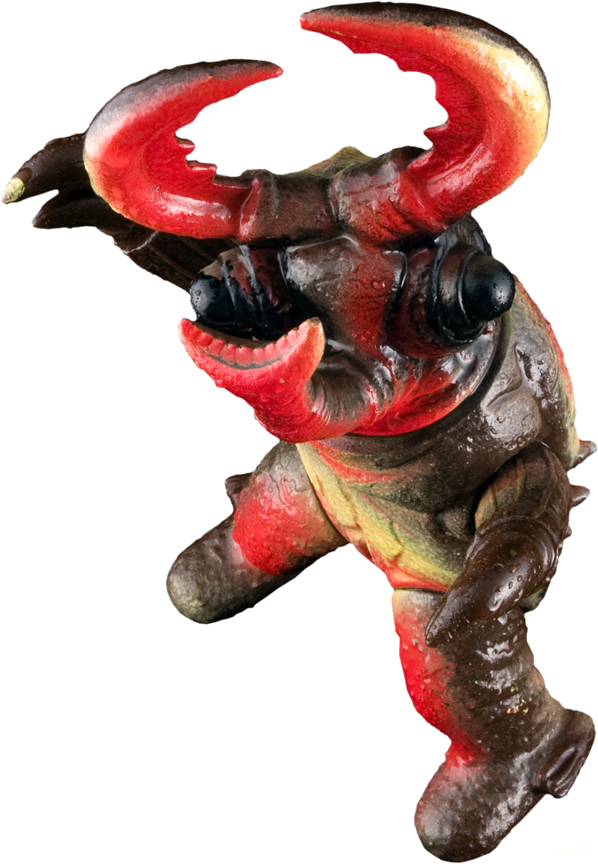

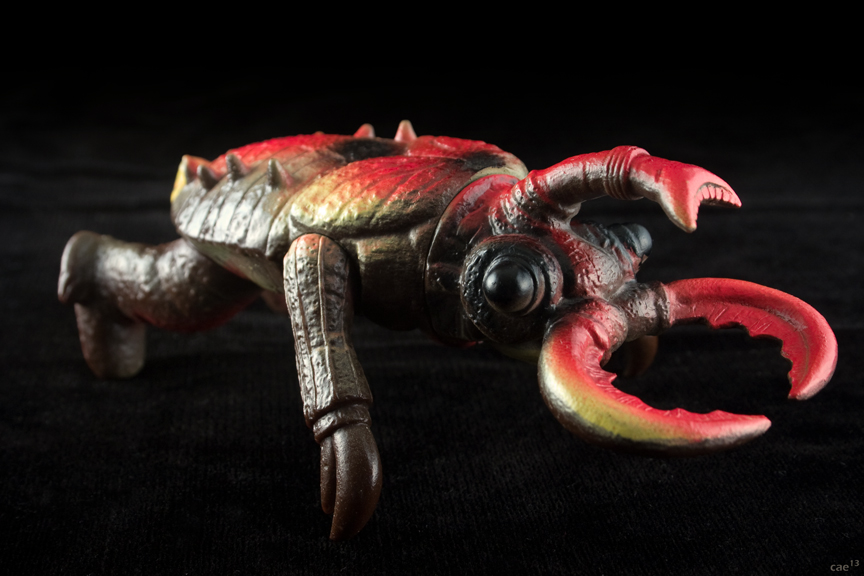
[…] while back I brought Nokogirin and Godzilla’s Gang to your collective attention. What I didn’t mention is that Nokogirin was not the only of the […]